What and how to feed trees in autumn?
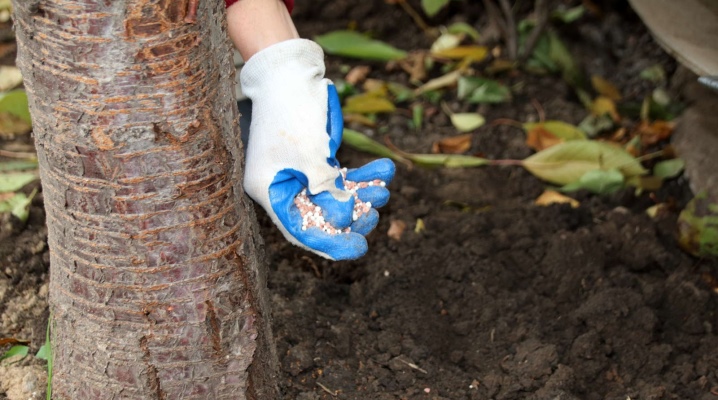
During the next growing season from early spring to mid-autumn, fruit and conifers in the garden, as well as the soil around them, are pretty depleted. As a result, the plants weaken so much that if they are left in this state for the winter, they most likely simply will not survive the cold and die. In order to prevent the death of trees, it is necessary to support them with adequate nutrition through autumn fertilization. Moreover, it should be done even before the onset of frost and constant snow cover. Plants must have time to gain strength before the long and difficult winter period.
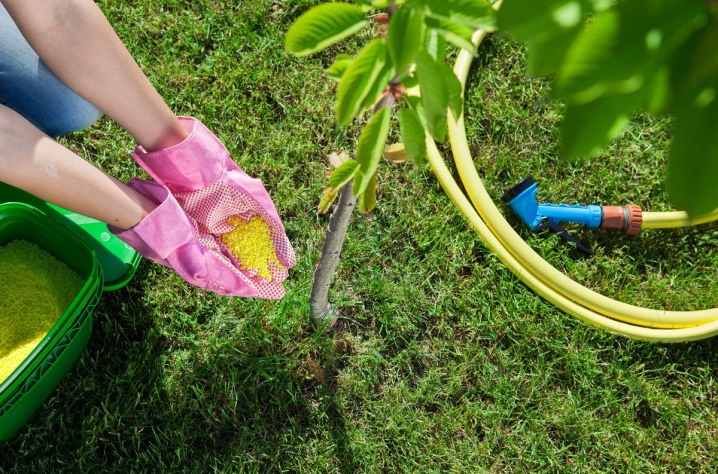
When is it needed?
Fertilization of fruit trees with nutrients in the fall is carried out after harvesting, without waiting for the onset of the autumn rainy season. Depending on the region of residence and the type of plants, this can be any month, from the end of August to the last removed late-ripening fruit. Top dressing with many fertilizers is mainly done before digging a site for the winter.... Thus, the soil is enriched with nutrients necessary for trees to recuperate before cold weather, increase immunity in order to reduce the risk of diseases, as well as high-quality preparation for the new spring-summer season. And although the application of autumn fertilizers is carried out throughout the entire area to improve the soil composition, the feeding of fruit and coniferous trees in the fall has its own characteristics, which will be discussed below.

Views
There are the following types of dressing for garden plants:
- organic fertilizers;
- mineral compounds;
- substances for foliar treatment of trees and shrubs.
Consider what these types of nutrients are. It is worth noting that the first two points can be represented by varieties of root feeding (in contrast to the third point - foliar feeding).
Organic
Organic fertilizers applied in autumn for root feeding of fruit and coniferous trees, as well as shrubs and berry plants, include the following substances:
- manure;
- humus;
- bird droppings (mostly chicken);
- wood ash;
- compost;
- siderates.

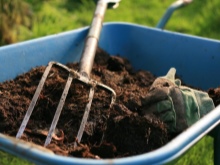

Only rotted manure can be applied. Fresh is not good for top dressing at all - neither autumn nor any others. For garden trees, this organic fertilizer of last year or two years of maturation is usually used. And when fresh, it contains too aggressive ammonia, which can destroy seedlings and tree roots.
It makes no sense to keep manure for more than two years, all useful substances will simply evaporate.

Humus - an excellent organic product for improving soil composition and increasing the productivity of horticultural crops. It is an artificial substance obtained as a result of putrefactive processes and the action of beneficial microorganisms in manure, plant residues, fallen leaves. Humus earth is black or dark brown, and its regular application to the soil invariably leads to an increase in the yield of the garden.

Bird droppings similar to any other animal dung, but it must be handled much more carefully, as with organic fertilizer. The fact is that the urea content of poultry manure is much higher than any animal manure, therefore it is always used in rotten form or diluted with water... But there are much more useful elements in it.
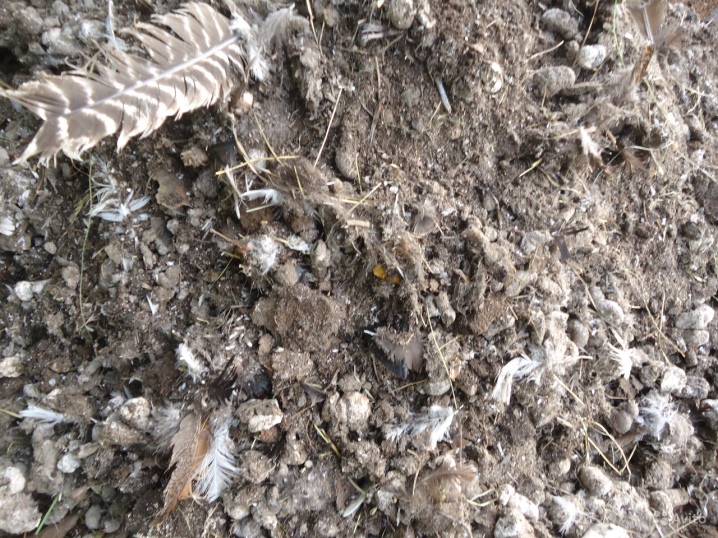
Wood ash very important for use on acidic soils in order to increase the pH of the soil. In addition, it is rich in calcium, potassium and phosphorus. This is exactly what fruit trees need after fruiting. It does not contain nitrogen, but it is not needed for autumn feeding.
Compost Is a completely rotted substance from plant and animal residues, kitchen waste, garden soil, which is prepared in piles, boxes or pits. The compost matures within 1.5-2 years, and is similar in color and consistency to humus.
It is the safest organic fertilizer that does not even contain weed seeds, so it is best suited for autumn feeding of garden trees.
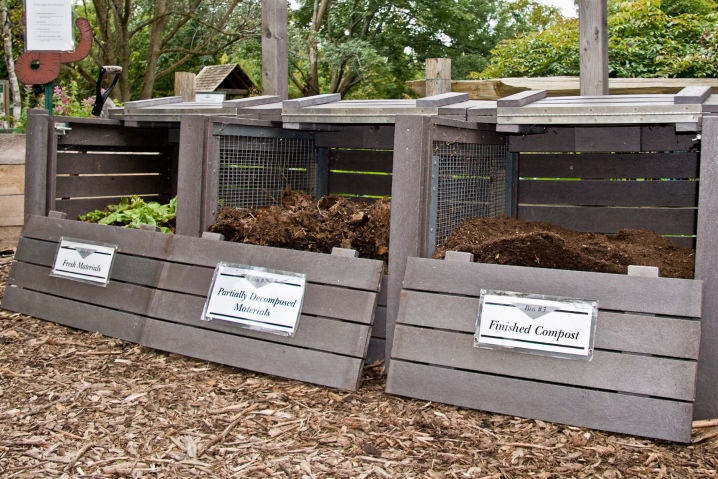
Sideratami are called special plants that are grown for introduction into the soil in order to enrich it with nutrients (mainly nitrogen), improve the structure and suppress weeds. Often, legumes (peas, lentils and others), as well as annual or perennial herbs that have the ability to quickly gain plant mass (lupine, sainfoin, alfalfa) are chosen as "green fertilizers".
It should be noted that in the fall it is impossible to apply readily available nitrogen fertilizers under the plants, so as not to provoke their growth. However, nitrogen-rich siderates, on the contrary, are applied under fruit and conifers in the fall, since nitrogen will be available in them only in the spring.
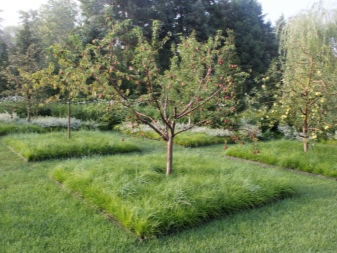
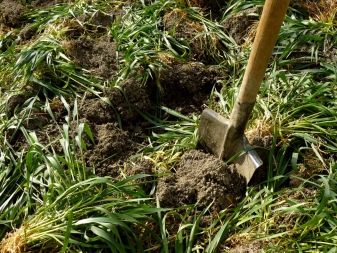
Mineral
Of the mineral fertilizers for autumn dressing of garden crops, those that contain potassium and phosphorus, as well as various microelements, are suitable. But it is categorically not recommended to introduce nitrogen mineral preparations - they dissolve very quickly and are absorbed by plants, which leads to the activation of growth processes, which is undesirable in the pre-winter period.
You can make:
- superphosphate, which will help to strengthen the root system;
- potassium sulfate to increase the frost resistance of plants;
- potassium chloride for inhibition of vegetation processes;
- phosphate rock - it increases winter hardiness.
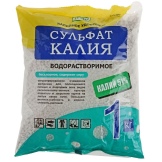

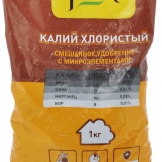
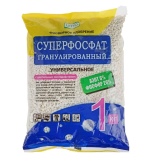
Foliar
In order to increase the immunity of fruit plants, feed them with individual substances, and also protect them from pests and diseases, they are sprayed with various preparations in the fall. This event is called foliar feeding.
For this, the following substances are used:
- copper sulfatecontaining mainly copper, which supports plant immunity and repels various pests;
- inkstone, the main trace element of which is iron, which actively fights against fungal diseases;
- ferrous sulfate, used to replenish the lack of iron in the soil and prevent the manifestation of chlorosis in the leaves of young trees (when the leaves change from green to pale yellow).
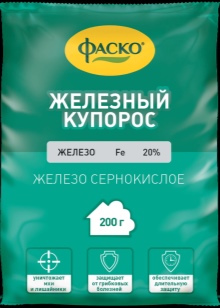
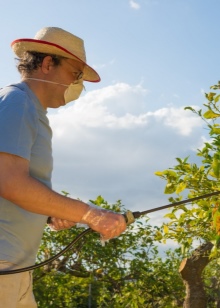
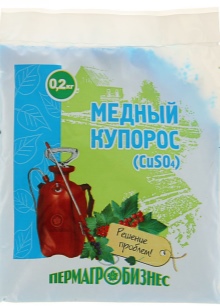
Terms of introduction
With terms it is undesirable to delay fertilizing in the fall, since after fruiting plants need to recover before the winter cold, having received the required amount of nutrition... And the vegetative period can quickly end along with the processes of assimilation of nutrients. In addition, continuous rains or early frosts can interfere with fertilizing.
On the other hand, warm autumn weather can drag on for too long, provoking plants, coupled with the introduction of fertilizers at the beginning of the new growing season. As a result, the trees will not be able to "fall asleep", the flow of juices will begin, and with the onset of frost, the plants will simply die from freezing. That's why any gardener should familiarize himself with the climate of the area of residence, follow the forecasts of meteorologists, observe the natural world, migratory birds, and sometimes notice folk signs regarding the onset of the rainy season and the first frosts... That is, you need to do everything to avoid mistakes in caring for your pets as much as possible and save them from death or disease.By the way, it would be useful to think about the climate and what types and varieties of trees to choose when planting a garden.
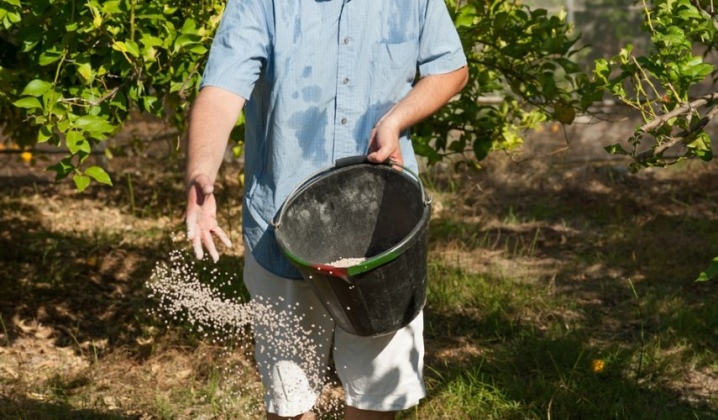
In general, the following general data on terms can be given:
- in the cold regions of our country autumn feeding of fruit and coniferous trees is most often carried out until the end of August;
- in central - until the end of September;
- in the south of the country - in the second decade of October.
But don't forget about the types and varieties of fruit trees. Each plant species (pear, apple, apricot, quince) has both early and late varieties. Sometimes you have to vary the plans for either harvesting or applying top dressing in time.
But applying nitrogen mineral or organic fertilizers (except for green manure) in the fall definitely should not be, so as not to stimulate the trees to vegetation.
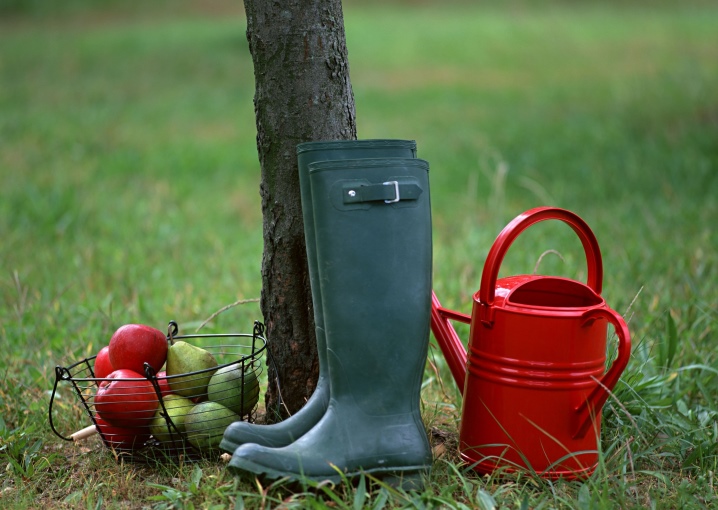
How to choose?
For autumn root dressing For fruit and conifers, it is recommended to use dry fertilizers. It is better to leave liquid infusions and solutions for the spring-summer period.... In this case, the nutrients will gradually pass into the form assimilable for the roots - something will be assimilated in the fall, the rest will become available in the spring. Everything will turn out smoothly and quite efficiently. If you apply liquid fertilizers, most of the nutrients from them will evaporate in the fall, and nothing will remain for the spring processes.
What kind of fertilizers (organic or mineral) should be decided by the owner of the garden. The safest, of course, organics - but only if the standards of sanitation and doses are observed... Mineral fertilizers can also do no harm when applying small amounts: experts advise taking doses of no more than 50% of those recommended in agricultural reference books, and replenishing the deficit with organic matter. That is, to make a complex top dressing. The fact is that some plants need mineral fertilizers more than organic ones.
And also there is a dependence of fruit trees on certain types of fertilizers, both by age, and by types and yield. If an apple tree, for example, has not yielded a crop at all in the current year, then it needs less basic nutrients than a fruit tree. Or a young pear needs 30 kg of humus, and after 5-6 years of yield - 50 kg. All the necessary data on the norms and characteristics of fertilizing can be found in the special literature for gardeners.
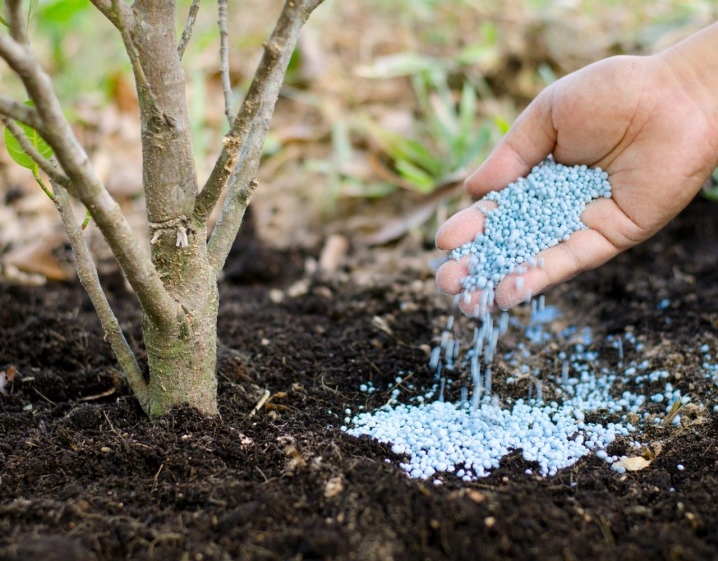
How to deposit?
For the next year to have a good fruit harvest, it is necessary to properly feed the fruit trees. You need to understand that if you fertilize garden crops "by eye" according to the amount of the drug, without adhering to either the norms or the application technique, then such an experience can very soon turn out to be sideways: either the trees will die, or the yield will come to naught, or the pests will destroy the garden, or harm to human health will be done.
Let's talk about how to fertilize trees in the fall.
- Remove fallen leaves in the tree trunk area.
- Dig up the soil under the plant (usually determine the diameter of the trunk circle that needs to be processed, according to the diameter of the overgrown branches).
- Dig several narrow pits over the entire area of the trunk circle and scatter evenly over them the required amount of mineral fertilizers (superphosphate and potassium sulfate - 30 and 20 grams per 1 square meter, respectively, under apple and pear trees). These fertilizers must always be applied together, as the individual effect is significantly reduced. In addition, for the best work of mineral fertilizers, the presence of humus or compost is imperative (in extreme cases, fertile soil).
- Fill in the pits, level and water.
- A little later, you can add humus. To do this, it is poured in an even layer on the surface of the soil under the tree, and then dug up with the soil to a depth of 15-20 cm.For apple trees or pears up to 7 years of age, it is necessary to add about 30 kg of humus (or compost), and for older trees - from 40 to 50 kg.

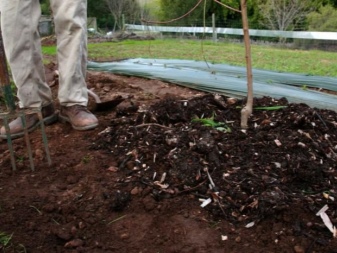
If only manure is introduced, then it is dug up with the soil in the area of the tree trunk circle. The application rate for fruit adult plants is 2-3 kg per 1 sq. m. A layer of good earth is poured on top, which is then mulched. Ash is applied under each tree 1 time in 3 years in the amount of 2 kg. To do this, a groove should be dug around the perimeter of the trunk circle, into which ash should be poured, evenly distributing the required amount. At the end, the groove is covered with soil. It is imperative to take into account the condition of the soil. If it is poor, for example, sandy or clayey, then the amount of fertilizers and their composition must be optimized in order to transform the poor soil into a more fertile substance.
How to feed fruit trees with organic fertilizers in autumn, see the next video.



































































The comment was sent successfully.